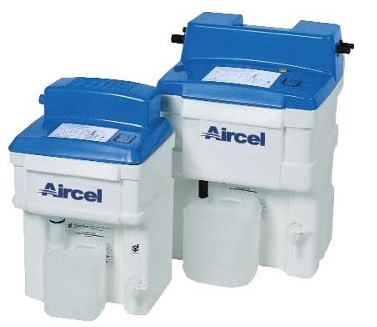Environmental Impact of Oil Water Separators in th…
Posted by AVP on May 26th 2023
The petrochemical industry has been criticized for its alleged negative effects on the environment for years. However, we must recognize the industry's efforts to become environmentally responsible and sustainable.
Oil-water separators are a useful technology that is often underestimated but should not be. By removing oil and other impurities from water, oil-water separators provide an essential function in the petrochemical sector.
In this blog post, we will explore the environmental impact of oil water separators and their importance in proper condensate management.
Importance of Proper Condensate Management
Condensate is a byproduct of compressed air systems, and it can accumulate in various points, including compressors' outlets, accumulator tanks, cyclone separators, coalescing filters, and refrigerated air dryers.
If not managed properly, condensate can cause severe environmental pollution. For example, oily condensate can pollute water sources, which is bad for marine life and people's health.
Proper condensate management is, therefore, essential in mitigating environmental pollution. Oil water separators play a crucial role in condensate management by separating oil and other contaminants from water, ensuring that the discharge levels meet or exceed environmental standards.
Environmental Impact of Oil Water Separators
Oil water separators can help mitigate environmental pollution by preventing oil and other contaminants from polluting water sources. However, their impact on the environment depends on various factors, including the type of separator, maintenance practices, and discharge methods.
One environmental impact of oil water separators is the discharge of oily sludge. If not disposed of correctly, oily sludge can cause environmental pollution. So, it's important to get rid of oily sludge in a way that doesn't hurt the environment and doesn't cost a lot.
Another environmental impact of oil-water separators is their energy consumption. Some oil-water separators consume a significant amount of energy, leading to increased carbon emissions. Therefore, it is crucial to use energy-efficient oil-water separators to mitigate their environmental impact.

Air System Products (ASP) Oil/Water Separators
At Air & Vacuum Process Inc., we believe that businesses should take responsibility for their impact and actively work towards a better future. We offer products that align with these principles, such as the ASP Oil/Water Separators.
These separators effectively purify condensate in compressed air systems, ensuring that the discharge levels meet or exceed environmental standards.
They use gravity to extract oil/water mixtures and purify the condensate, resulting in residual oil content of 20 ppm or lower. This highly efficient and cost-effective method ensures that discharge levels are met or exceeded.
Additionally, there are seven different models of the ASP Oil/Water Separator available, ranging from 50 to 2,400 scfm. These energy-efficient models are suitable for businesses that emphasize environmental and economic sustainability.
Oil-Water Separation: How It Works
In the world of industrial machinery, oil-water separation is a vital process. Maintaining operational efficacy and security calls for a tried-and-true method.
Behold the revolutionary system for oil-water separation - a game-changer in the industry.
It's a multi-stage operation that starts with introducing liquid condensate and pressurized air into the unit's pressure release chamber. What follows is a series of intricate steps that result in the complete separation of oil and water.
Firstly, a foam coalescing pad captures condensate droplets that are entrained in the expanding and exhausted air stream. This is followed by the entry of the condensate into a removable pre-sedimentation chamber where solid particles are separated and captured.
Next, the condensate passes through a coalescing foam block, which initiates the oil-water separation process. This leads to the primary settling chamber where the gravity separation of liquid oil and water takes place.
After being collected in a detachable container, the separated oil is skimmed off the top of the settling chamber using an adjustable oil drain tray.
Alternatively, the purified water continues downstream through a pre-adsorber that removes even more oil and safeguards the carbon bag(s) that are to follow.
Finally, activated carbon removes oil to a residual level of 20 ppm or lower. There may be one or two carbon adsorption chambers in a unit, depending on its capacity.
The purified water is then drawn from the bottom of the carbon adsorption chamber and either exits the unit or passes into the second carbon adsorption chamber if present.
With this process, the revolutionary system for oil-water separation achieves a level of efficiency and reliability never seen before in the industry.
Oil-water separators play a crucial role in the petrochemical industry by separating oil and other contaminants from water. Proper condensate management is essential in mitigating environmental pollution, and oil-water separators offer a solution to this problem.
At Air & Vacuum Process Inc., we offer the Air System Products Oil/Water Separators, which are highly efficient and cost-effective. They effectively purify condensate in compressed air systems, ensuring that discharge levels meet or exceed environmental standards.
